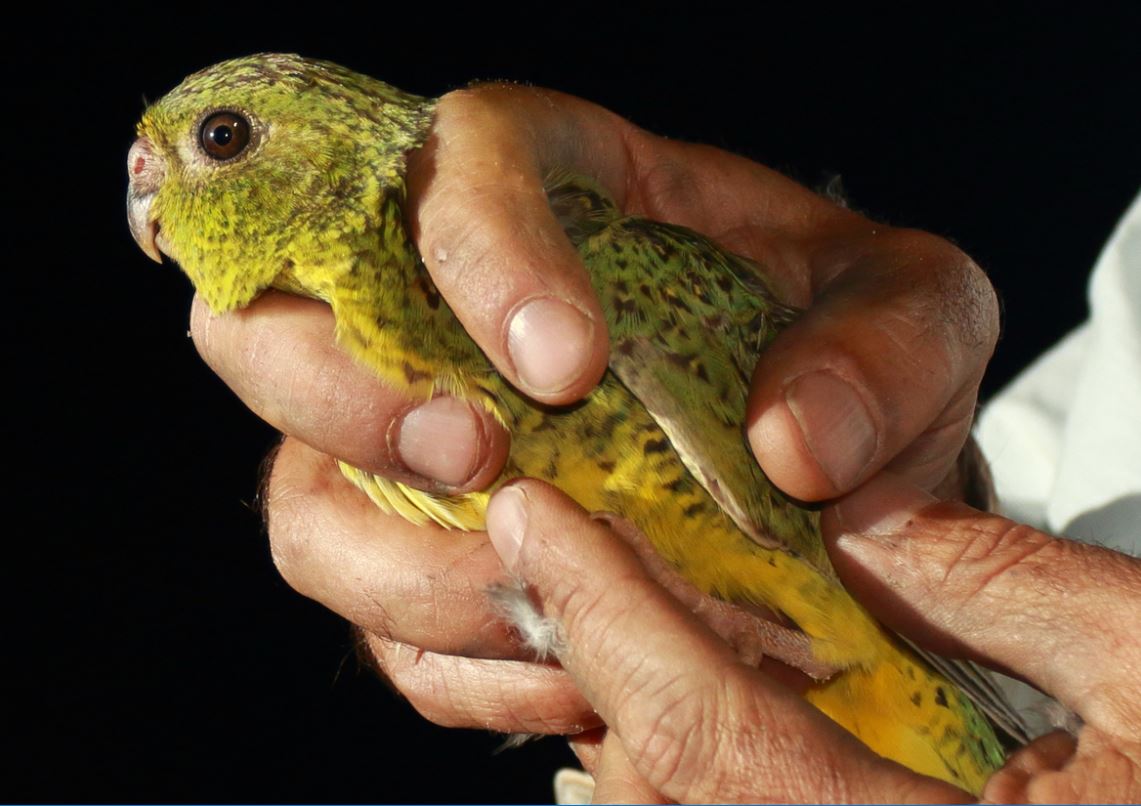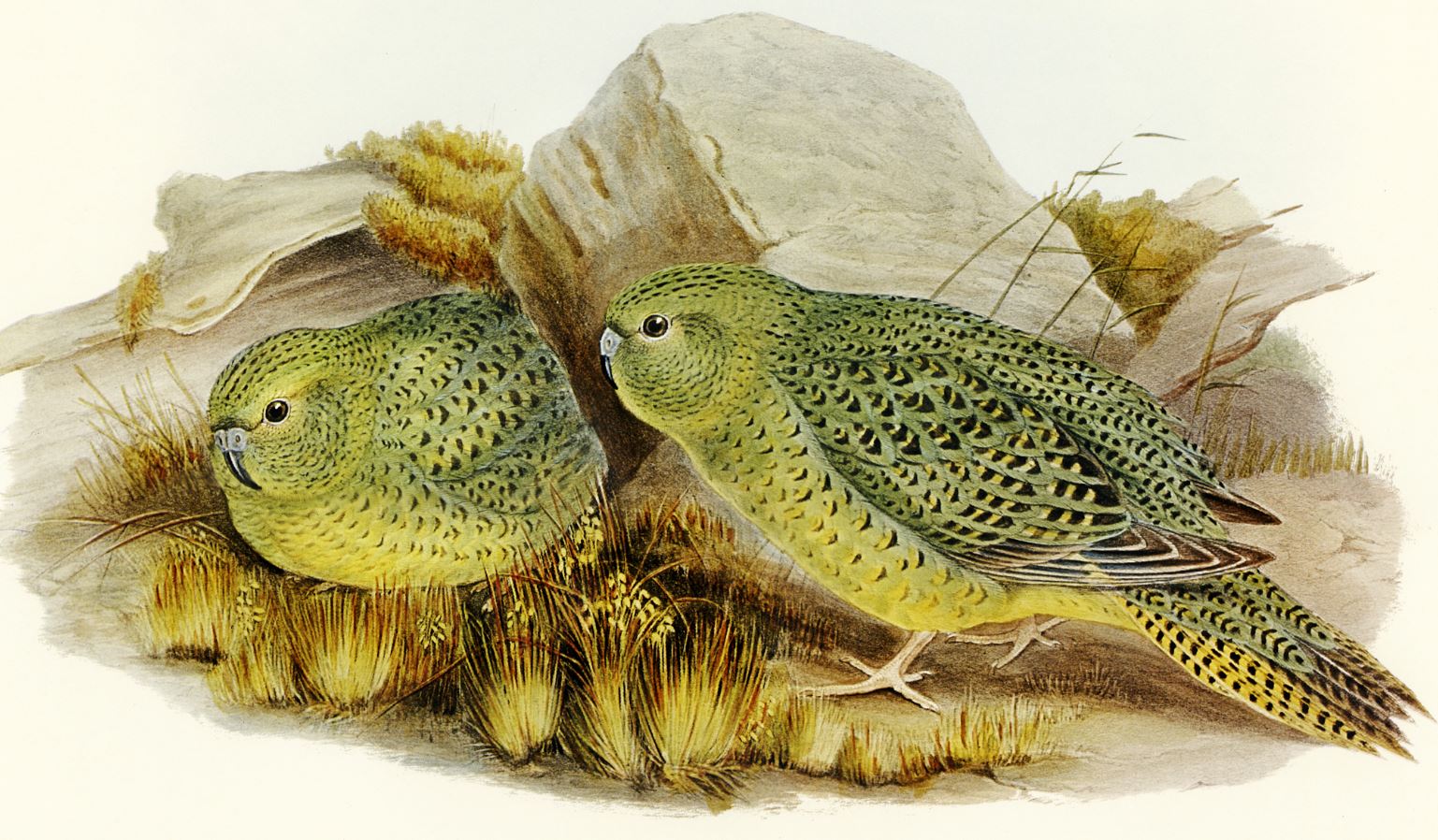
Special cranial adaptations, including an asymmetrical 'wonky' skull and enlarged ears, may give the critically endangered ground-dwelling Night Parrot the edge it needs to make its way around the Outback in the dark -even with limited eyesight and a big "bluffy" head.
Flinders University palaeontologists used an historic Night Parrot specimen from London's Natural History Museum to investigate its anatomy using high-resolution CT scans after finding it difficult to identify its fossil remains.
"In our work we typically study the anatomy of extinct animals, but we also use our skills to investigate living species - in this case one of the threatened bird species prioritised by the Australian Government for recovery over the next decade," says Flinders University researcher Dr Elen Shute, who has published the latest study of this 'cryptic' nocturnal bird in EMU - Austral Ornithology (Taylor & Francis Group).
"We hope ecologists can make the most of the next 10 years to find out as much as possible about the biology and behaviour of Night Parrots and work out how many there are, how many locations they survive in, and what we need to do to put their populations on the upward trajectory."
The new study sheds light on the life of the small nocturnal and very elusive Night Parrot, which was only photographed for the first time in 2013, after eight decades of outback expeditions failed to find a surviving population.
The Flinders University researchers examined the museum specimen used by eminent British ornithologist John Gould to formally describe the Night Parrot in scientific literature in 1861. Carefully preserved for more than 160 years, the UK specimen gave the South Australian team new insights into the species.

"The use of non-destructive CT imaging is paramount in studies on such rare material," says co-author Dr Alice Clement, from Flinders University's Palaeontology Laboratory.
"In using CT scanning, we were able to digitally peel back the preserved layers of feathers and skin to reveal the skeleton beneath without any damage to the specimen. Furthermore, digital models of the Night Parrot's bones are now available for researchers around the world to examine without the need to capture new animals.One finding was that the bird, in a similar way to owls, has an asymmetrical skull and ears, which may help Night Parrots to locate where sound is coming from
The large size of the external ear region is also remarkable, the researchers found.
"We were impressed by how far one of the Night Parrot's ears stick out sideways, and also the sheer size of the external ear region," says senior co-author, Flinders Professor of Palaeontology Gavin Prideaux.
"Taking up about one-third of the length of its head, its enlarged ear chambers may act like amplifiers which in turn would increase the volume of sound transferred to the inner ears."
The advanced scanning revealed another evolutionary insight into how this skilful little bird manages to survive with limited night vision - its advanced audio capabilities likely to compensate for small eyes and optic nerves.
"Examination of the skull showed how the enlarged ear chambers appear to constrain the maximum size of the Night Parrot's eyes yet they are able to fly up to 30 km at night to forage before returning to roost at sun-up.
 "By measuring the scleral ring - a ring of bone that sits inside the eyeball - and comparing it to those of other birds, we found that a Night Parrot's cornea is about as small as it can get while still allowing visually-guided nocturnal flight. A millimeter or two smaller, and they really would be flying blind," says Dr Shute.
"By measuring the scleral ring - a ring of bone that sits inside the eyeball - and comparing it to those of other birds, we found that a Night Parrot's cornea is about as small as it can get while still allowing visually-guided nocturnal flight. A millimeter or two smaller, and they really would be flying blind," says Dr Shute.
"This is probably why ornithologist John Gould described the Night Parrot as having an outsized or 'bluffy' head compared to its body - evolution has crammed as much as it can into its skull."

The Finders University researchers are calling for more investigations into the special sensory powers of this intriguing Australian bird, which lives in remote arid pockets of the country and is one of only two strictly nocturnal parrots in the world, along with New Zealand's Kakapo.
Its diurnal relatives are the Eastern Ground Parrot and Western Ground Parrot, which are ground-dwelling species in sub-coastal habitats of Australia.
The article, 'Cranial adaptations of the Night Parrot (Psittaculidae: Pezoporus occidentalis), a cryptic nocturnal bird' (2023) by Elen R Shute, Alice M Clement (also developed the 3D videos) and Gavin J Prideaux, has been published in the journal Emu - Austral Ornithology (a Taylor & Francis journal) DOI: 10.1080/01584197.2023.2181185.






